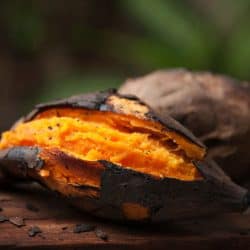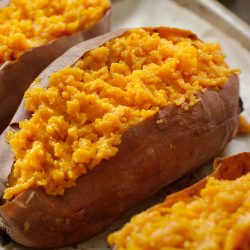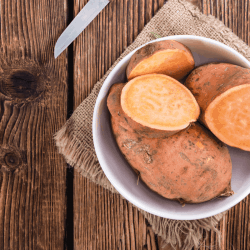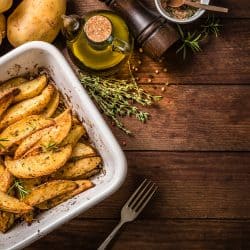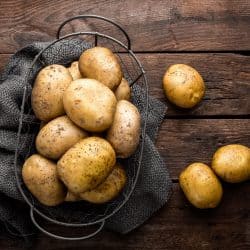To wrap or not to wrap. It's a question in the cooking community that's almost as common as it is controversial. But does it really make a difference when baking your sweet potatoes? We've done the digging, and we've got the scoop for you.
Most chefs do not recommend wrapping sweet potatoes in foil. Doing so traps in steam while the sweet potato bakes, which can lead to a soggy spud. If you do wrap your sweet potatoes in foil, it is best to do so loosely so that steam can still escape during baking.
We've got the tips you need to bake your perfect sweet potato as well as some ideas on how to enjoy it once it's out of the oven. Read on to get to the root of this culinary conundrum!
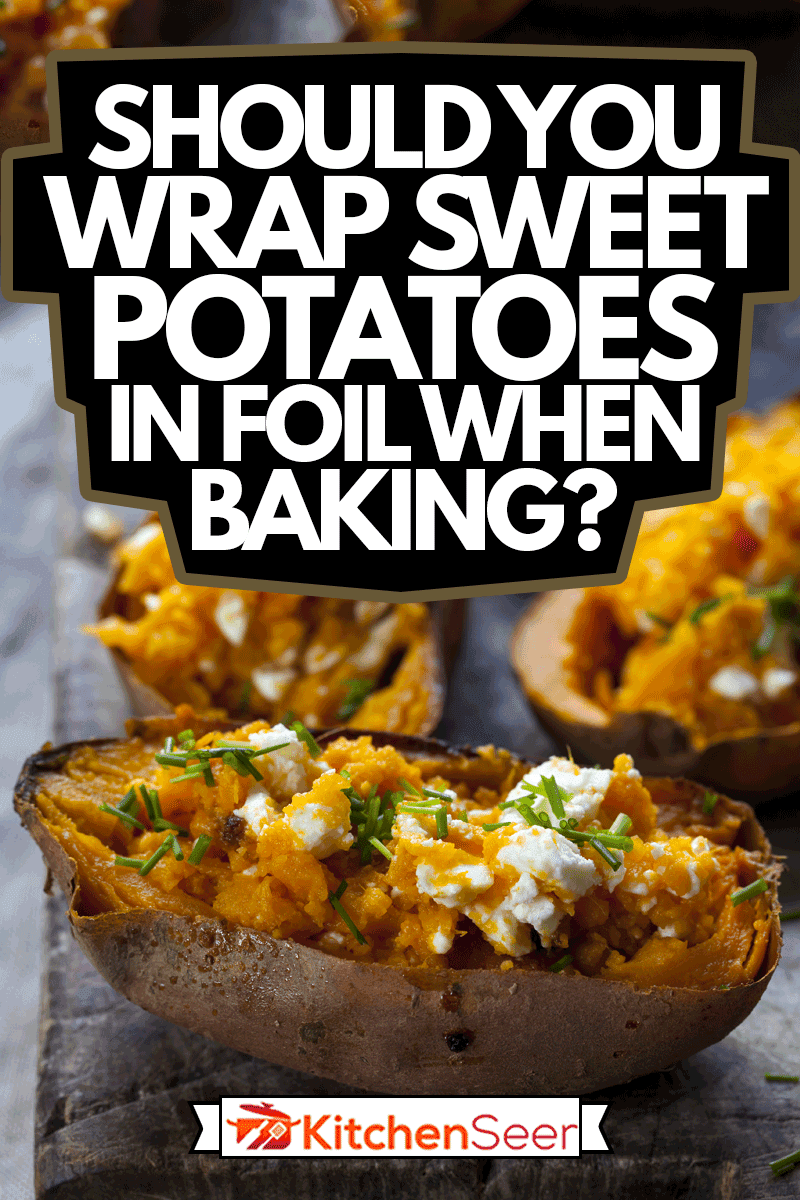
Why not wrap a sweet potato in foil?
The main reason not to wrap your sweet potatoes is their water content. Sweet potatoes are 77% water, and when you cook them you want some of that water to evaporate out. Otherwise, they may end up wet and mushy.
Wrapping them in foil makes it harder for the steam to escape, increasing the risk of soggy sweet potatoes. If you are set on wrapping your sweet potatoes, do so loosely so more steam can still escape.
Proponents of wrapping say it reduces cooking time. This claim is made for both sweet potatoes and your standard potato. The idea is that trapping steam leads to faster cooking, which does seem intuitive.
However, according to Idaho Potato, wrapping in foil can actually slightly increase the cooking time. They do recommend wrapping your potatoes in foil after baking to keep them warm if you are not serving them immediately.
Should you poke holes in sweet potatoes before baking?
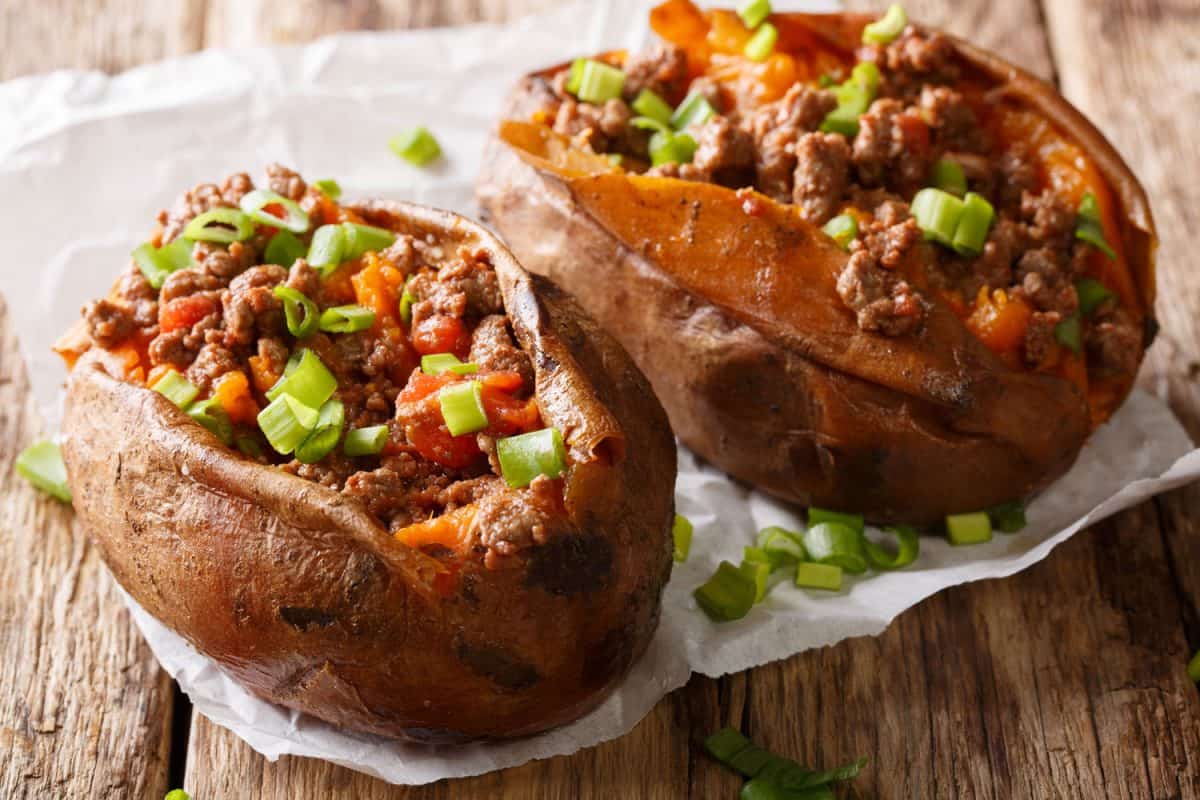
Using a fork to poke holes in the skin is a common technique for baking potatoes. It allows steam to escape from the starchy interior, leading to a fluffy center. The same technique gets great results with sweet potatoes too.
When sweet potatoes bake, the moisture in the flesh turns to steam. This steam cooks the flesh of the sweet potato, but the tough skin doesn't let it escape. If the steam has no way to release from the flesh, it accumulates.
Much like wrapping in foil, the skin trapping in the heat can make the inside of the sweet potato soggy. It's even possible for the steam to build up so much that the sweet potato explodes in your oven!
You can use a fork to poke holes in the skin to avoid this problem. You don't need to cover every inch of your sweet potato in holes. Four or five pokes around the sweet potato should be plenty to allow the steam some escape routes.
Can you leave skins on sweet potatoes?
The skins of sweet potatoes are usually a bit tough and dirty, so you may be tempted to peel them. However, those same skins contain a lot of nutrients, and their texture can offer a nice contrast to the soft flesh when properly cooked. When baking a whole sweet potato, there are even more reasons to leave the skin on.
The skin on a whole sweet potato helps it cook evenly. Even properly punctured skin will keep in enough steam to help the flesh cook evenly. If you bake a whole, peeled sweet potato, the outer layers will dry out before the center cooks through.
Of course, many people don't care for sweet potato skin. It often ends up dry, crumbled, and unappealing by the end of the bake. But it can be scrumptious too!
One technique to get the skin more appetizing is to give it a light rubdown with a neutral oil, like sunflower oil, before baking. The skin will be crisp, but not so dry and shriveled. This gets the skin easier to enjoy but also easier to remove if you prefer not to eat it.
Why are my baked sweet potatoes dry?

If you've followed a solid recipe closely, but your sweet potatoes are still dry, there's a good chance the problem preceded cooking. Incorrectly curing and storing sweet potatoes can lead to them drying out and developing unpleasant flavors.
When you store your sweet potatoes, do not keep them in the refrigerator. This is a recipe for hard flesh and unsavory tastes.
Traditionally, sweet potatoes would be stored in a root cellar. Of course, most people no longer have root cellars at home, but try to find a place that mimics those characteristics. It should be cool (preferably below 60º), dry, and well ventilated.
If you are harvesting your own sweet potatoes from your home garden, you will also want to cure them yourself before storing them. As sweet potatoes cure, they convert starch into sugars, giving them their characteristic taste.
Ideal curing conditions are almost the opposite of storing conditions. You want the sweet potatoes somewhere warm and somewhat humid for one to two weeks.
If you don't already have a set-up for curing them, you can keep them in a loose, plastic bag in a sunny spot of your house. Alternatively, you can keep them in a small room with a space heater and humidifier at 85 to 90 percent humidity.
Can you overcook a sweet potato?
It is much easier to undercook than overcook a baked sweet potato. Undercooked sweet potatoes will be crunchy rather than tender. Overcooked sweet potatoes in the oven might lose more moisture and get dryer, but the skin, even when perforated, helps protect them from drying out quickly.
When baking your sweet potato, aim for a longer bake instead of a shorter one. Most recipes call for 45 to 60 minutes of total cooking time, but times vary depending on the temperature, shape, and size of your sweet potatoes.
To get the full lowdown, check out our article, "How Long to Bake Sweet Potatoes." You'll learn more about baking your sweet potatoes and also find some awesome recipe ideas!
How do you know when baked sweet potatoes are done?
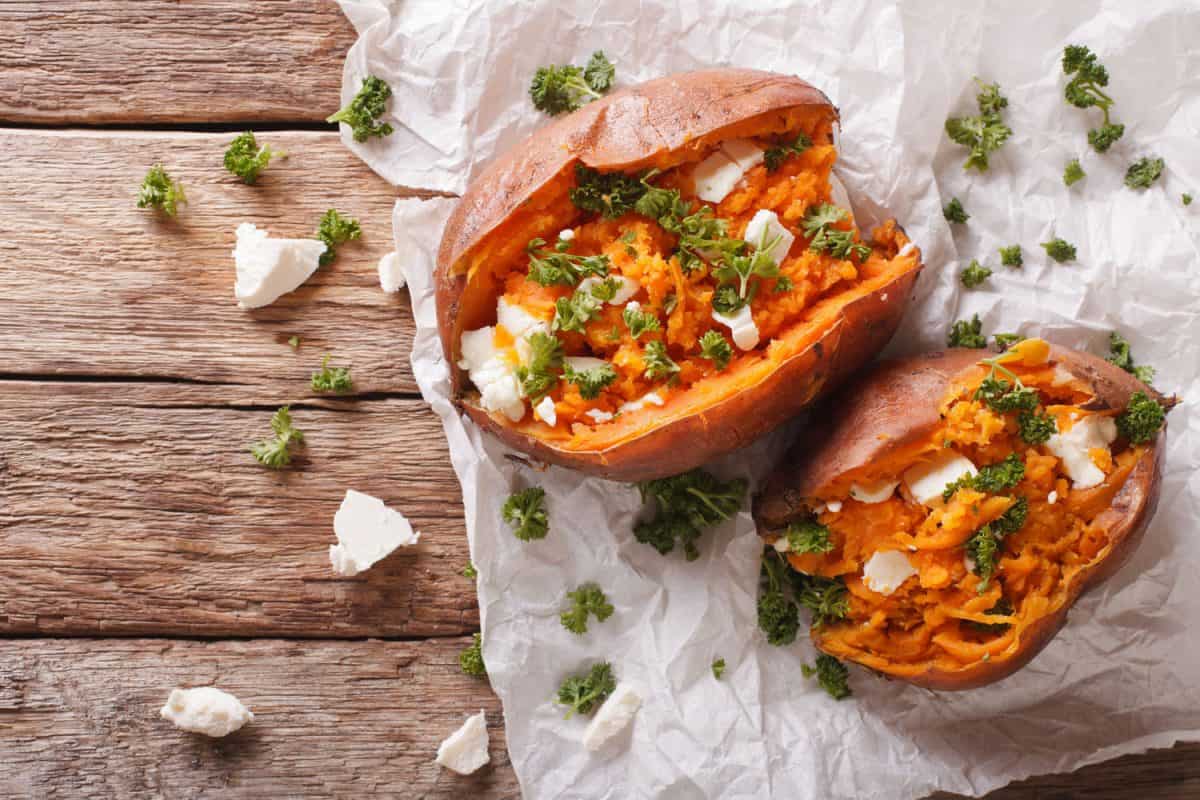
The most direct way to check your sweet potatoes for doneness is to take their temperature. Insert a thermometer into the widest part of the sweet potato, aiming for the center. When it is fully cooked, the temperature should be between 205 and 212º F.
You can also tell if a sweet potato has finished cooking by feel. Pierce the sweet potato with a fork. When it is fully cooked, it should be tender all the way through, offering almost no resistance other than the skin. If the flesh still feels at all firm, let it bake 3 to 5 minutes longer and check again.
Should you wrap sweet potatoes on the grill?
While most chefs don't recommend wrapping sweet potatoes in the oven, it's a different story for the grill. Whether you're cooking sweet potatoes whole or cut up, it's best to wrap them in foil on the grill. But why is this?
Ovens do a better job than grills when it comes to surrounding the sweet potatoes in more-or-less even heat. On the grill, however, the heat will mostly be coming from one side, even when left on indirect heat. Wrapping in foil in this case helps assure more even cooking by trapping steam and heat around your sweet potatoes.
How to enjoy roasted sweet potatoes
Baked sweet potatoes are amazing to just slice open, top with some salt and butter, and enjoy. Still, variety is the spice of life. Here are some great ways to use your roasted sweet potatoes with a little more flair.
Twice-Baked Sweet Potatoes
Baking is so nice, why not do it twice? After the sweet potatoes have cooled, simply cut out the flesh and mix it with other ingredients, then return them to the skins and bake again at a lower temperature.
You can experiment with your own flavor combinations, but for a sure-fire hit, check out this recipe for twice-baked sweet potatoes from chef and Food Network star Ina Garten. She uses shallots, thyme, and Tagelli cheese to make these sweet spuds scrumptious and satisfying.
Mashed Sweet Potatoes
Most recipes for mashed sweet potatoes boil them first. By baking instead of boiling, not only are you less likely to get overly wet sweet potatoes, they'll have a deeper, sweeter flavor.
This recipe from Cooking Classy combines baked sweet potatoes with browned butter and maple syrup. The browned butter accents the richness of the roasted sweet potatoes, and the maple syrup adds even more depth to their sweetness. This is sure to be a crowd-pleaser!
Sweet potato pie
Canned sweet potato purée delivers on convenience but can't compete with baked sweet potato flesh when it comes to flavor or texture. Step your next pie up by using the flesh of roasted sweet potatoes in lieu of the canned stuff.
You can still keep up the convenience by using a ready-to-go pie crust, like in this recipe from Betty Crocker. For even tastier results, you can make your own pie crust too. A food processor can make whipping up quality pastry a pinch. Learn how to do it in our article, "Can You Make Pastry Dough in a Food Processor?"
Wrapping Up
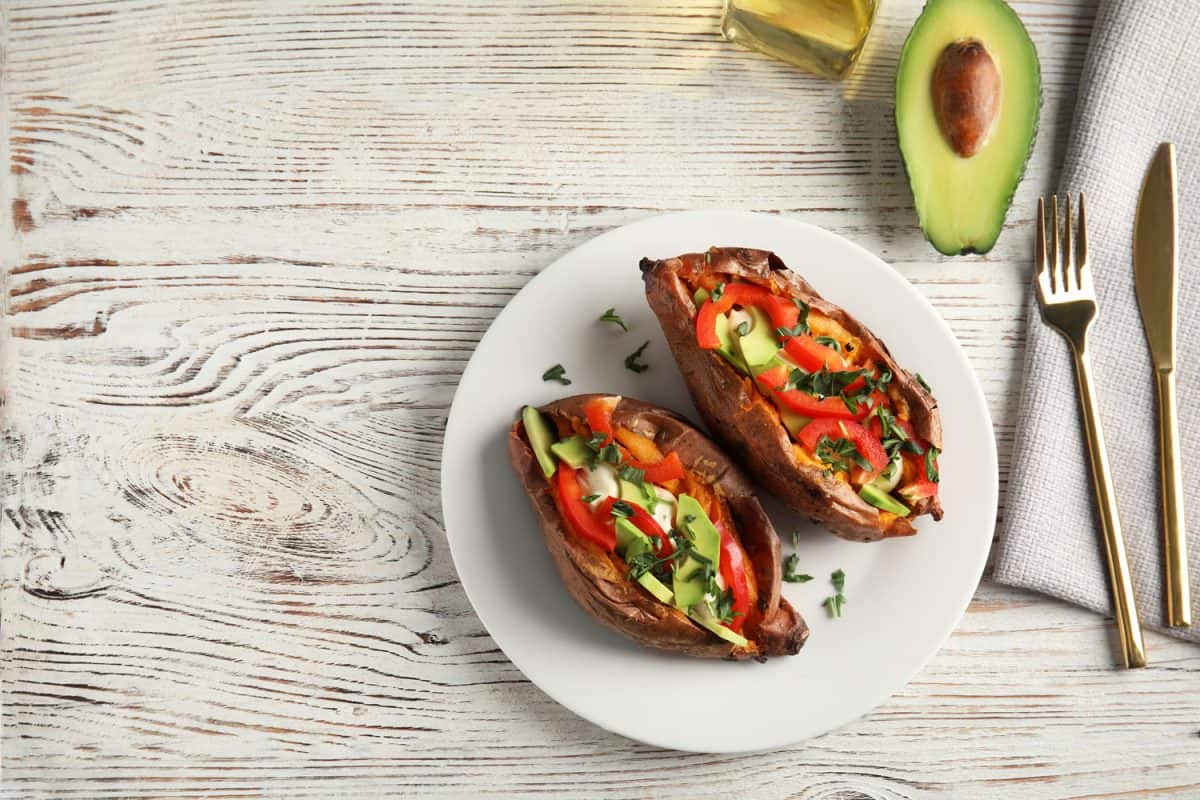
Wrapping sweet potatoes in foil for baking is not only unnecessary; it can lead to a mushy meal. If you are still in the wrapping camp, you can follow our advice and wrap it only loosely to avoid steaming your sweet potatoes.
Now you should know more about how to get your sweet potatoes the way you like them and even have some new ideas for how to use them. Making sweet potatoes part of your culinary repertoire is sure to keep you and your loved ones happy, healthy, and always coming back for more.
Happy cooking and bon appétit!

